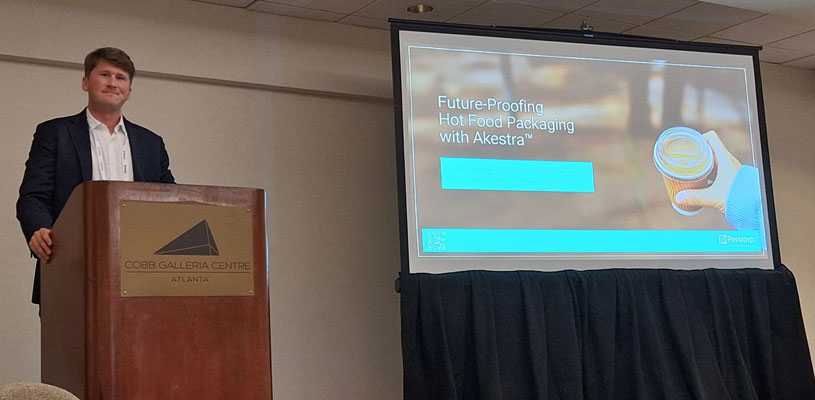Reflections from the 2025 SPE Thermoforming Conference
This year’s SPE Thermoforming Conference offered a deep dive into the landscape of industrial and packaging thermoforming - and we are proud to be part of the conversation.
Held in the U.S., the event brought together over 250 attendees and key industry players . The conference is an important platform for showcasing innovations that will shape the future of thermoforming materials and technologies.
The conference revealed not only where the industry stands today, but more importantly, where it’s headed. From sustainability imperatives to breakthrough technologies, here are the standout themes:
A turning point for legacy materials like polystyrene
While PS (polystyrene) is known in the thermoforming industry as the “gold standard” thanks to its nice processability, it’s future for thermoforming applications was challenged in multiple sessions, with many pointing towards PET or PP replacement. This is largely due to availability concerns of Post Consumer Recycled PS, which is recycled at significantly lower rates than polyester materials.
In contrast, PET and PP are increasingly viewed as more circular alternatives. Each comes with its own hurdles (see below), underlining the need for new material solutions such as Akestra™ that enables higher performance for standard APET.
The push for Tray-to-Tray (T2T) recycling
One of the loudest messages from the conference was the call for dedicated tray-to-tray recycling systems, especially for thermoformed PET and PP. Current guidance in the U.S. primarily focuses on bottle recycling, with little consideration for thermoformed packaging.
Several initiatives are addressing this gap, piloting collection systems at retail level, encouraging consumers to sort and return used thermoformed packaging. This model would feed directly into dedicated PET thermoforming recycling streams, offering a solution for localized circularity.
With extended producer responsibility (EPR) laws and “mini-PPWR” schemes emerging across different states, the urgency for industry-specific recycling solutions is growing fast. The message is clear: the U.S. thermoforming industry should follow the lead of Europe’s tray-to-tray protocol .
Material-specific recycling challenges
Despite its low carbon footprint, Polypropylene (PP) continues to face hurdles in mechanical recycling, due to blending of colorants. This coupled with a narrow thermoforming processing window makes it challenging to incorporate PCR PP material without compromising quality.
The compostable & paper packaging paradox
Despite growing consumer interest, compostable plastics continue to struggle with credibility in the U.S. market. Poor historical experiences with compostable plastics in industrial composting facilities have left stakeholders cautious. Home composting is still viewed as unrealistic on a national scale.
Similarly, while paperization is gaining attention, it’s still not as prevalent in U.S. thermoforming. Several LCA (life cycle assessment) studies show that paper packaging does not always outperform plastics on environmental metrics, but consumer perception tells a different story. Brands face a delicate balancing act between scientific data and public sentiment.
Driving innovation with Akestra™
At Perstorp, we presented our Akestra™ solution to an audience of thermoformers, toolmakers, and material experts and stood out as one of the few true raw material innovations showcased at the event. Through co-extrusion, Akestra™ is a polyester compatible with rPET/bio-PET which expands the possibilities of PET in thermoformed packaging. It combines up to 95°C heat resistance, glass-like clarity, and certified food contact safety (EFSA and FDA) with seamless integration into existing PET sheet lines. It’s a future-ready material for:
- Hot fill packaging
- Ready meal and takeaway containers
- Hot food service packaging
To learn more about Akestra™, visit our webpage.
